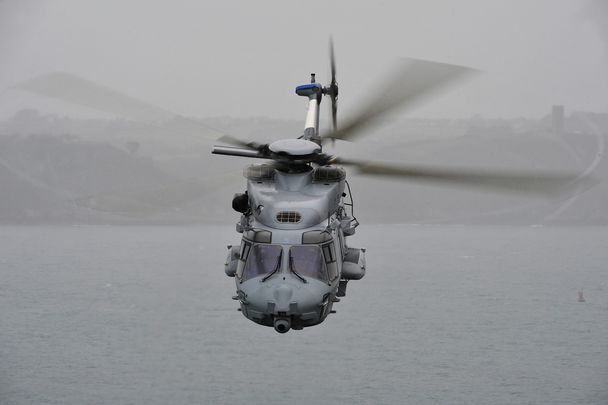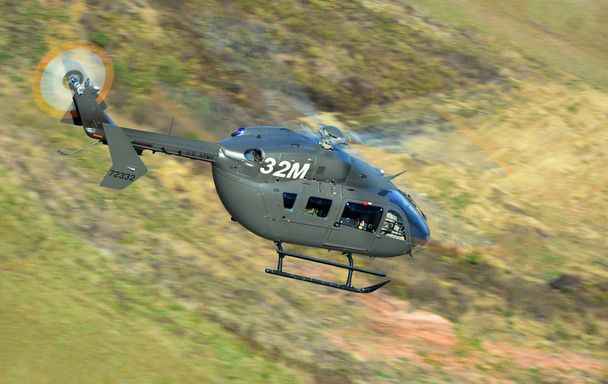Answering the call for military fleet availability

Aircraft availability is among the top expectations of both civil and military operators for their helicopter fleets. Here are some of the ways Airbus Helicopters is working to boost performance for military operators in particular.
What is aircraft availability?
When can we say an aircraft is available? When is it considered unavailable? These questions are worth asking because the definition of the term can vary.
For Airbus Helicopters, a helicopter is considered available* when it’s ready to perform a mission and is not in maintenance, whether scheduled or unscheduled. But various factors have an impact on mission readiness, which makes predicting the availability of an aircraft like setting an equation with several unknown variables: parts availability, unscheduled maintenance, the management of downtime and other user-specific constraints.
A complex set of intersecting responsibilities
Each of these variables involves various actors from across the industry. The original equipment manufacturer (OEM) is responsible for technical documentation, the maintenance programme it defines, the reactivity of its workshops and of course the inherent reliability of its aircraft. Responsibility for parts storage and supply of spare parts depends on the contractual model established between the customer and the OEM. Users are responsible to a certain extent for the availability of their equipment, especially when they manage technical interventions or the logistics and storage of their spare parts themselves.
Whatever the case, a fluid relationship between the OEM and the operator is essential. A division of responsibilities or an increase in uncoordinated contracts can become obstacles to achieving the required availability.
Simplifying maintenance with global support contracts
“This is why we have placed the verticalisation (or globalisation) of maintenance contracts at the heart of our HCare support offer*, which we recently revamped to better match with customer profiles and requirements,” stresses Christoph Zammert, Executive Vice President of Customer Support & Services at Airbus Helicopters. “Rather than managing everything themselves and multiplying the number of contracts and contacts, customers delegate a certain amount of responsibility to the manufacturer, depending on the degree of risk they wish to outsource. Furthermore, as an OEM, we have the clearest overview of all maintenance for the equipment we build.”
One contract, one supplier, one long-term vision with firm and strong commitments, whether to supply spare parts, manage stock or guarantee flight hours.
“These global support contracts allow us to aim for more ambitious availability targets, with controlled costs that are free of surprises and penalties in the event of non-compliance with commitments,” summarises Zammert. “It is a process that works for all fleet sizes and is increasingly popular with military customers.” Airbus Helicopters’ global support contracts now cover more than half of the world’s military and parapublic fleets, i.e., nearly 1,500 aircraft on all continents. Here are some recent examples:
- Super Puma family for the French armed forces: A contract covering the period from 2019 to 2031 gives Airbus Helicopters full responsibility for the maintenance of a fleet of 44 aircraft (Caracal, Cougar and H225), including the presence of 25 Airbus representatives on French bases. Thanks to this contract, Cougar maintenance intervals have been extended from 600 hours or two years to 750 hours or three years and availability has improved by around 10 percentage points compared to before 2019. Fleet availability should continue to improve through 2025.

- U.S. Coast Guard: A 10-year support contract, covering manpower, training and technical data, was signed in December 2020 for the U.S. Coast Guard’s fleet of nearly 100 Dauphin helicopters. It was supplemented in September 2021 by an additional innovative contract covering spare parts availability. Since then, availability has increased from 70% to greater than 95%.

- U.S. Army: The UH-72 A and B Lakota (over 480 aircraft in-service to date) are currently under contract for parts support, technical support, training and engineering services. This contract was renewed in May 2022 for another five years. The contract with the U.S. Army, known as Contractor Logistics Support (CLS), is the largest helicopter performance-based support contract managed by Airbus worldwide.

- NH90: 22 initiatives have been launched recently to extend maintenance intervals and improve the availability of spare parts. The signature of a global maintenance contract covering the French and German fleets (75 and 95 aircraft respectively) for the next five years will increase aircraft availability while allowing users to focus on operations.

*Aircraft that are undergoing configuration changes, such as mid-life upgrades or retrofit, are not included in the availability calculation.
**Earlier this year, Airbus Helicopters simplified its HCare service offer to just three solutions fitting the main stages of the customer journey: HCare Initial, HCare In Service, or a combination of the two, HCare Lifetime. Military and parapublic operators looking for an end-to-end package and long-term collaboration often opt for HCare Lifetime (formerly HCare Infinite), which aims to maximise the aircraft’s performance and value over time, while enhancing safety and providing successive, sustained support. Customers starting operations with a new Airbus helicopter or taking delivery of a new aircraft type will find that the HCare Initial package offers the right set of services to ensure a successful entry into service. During the rest of the aircraft’s life, Airbus Helicopters proposes HCare In-service for customers already operating an Airbus helicopter type.



